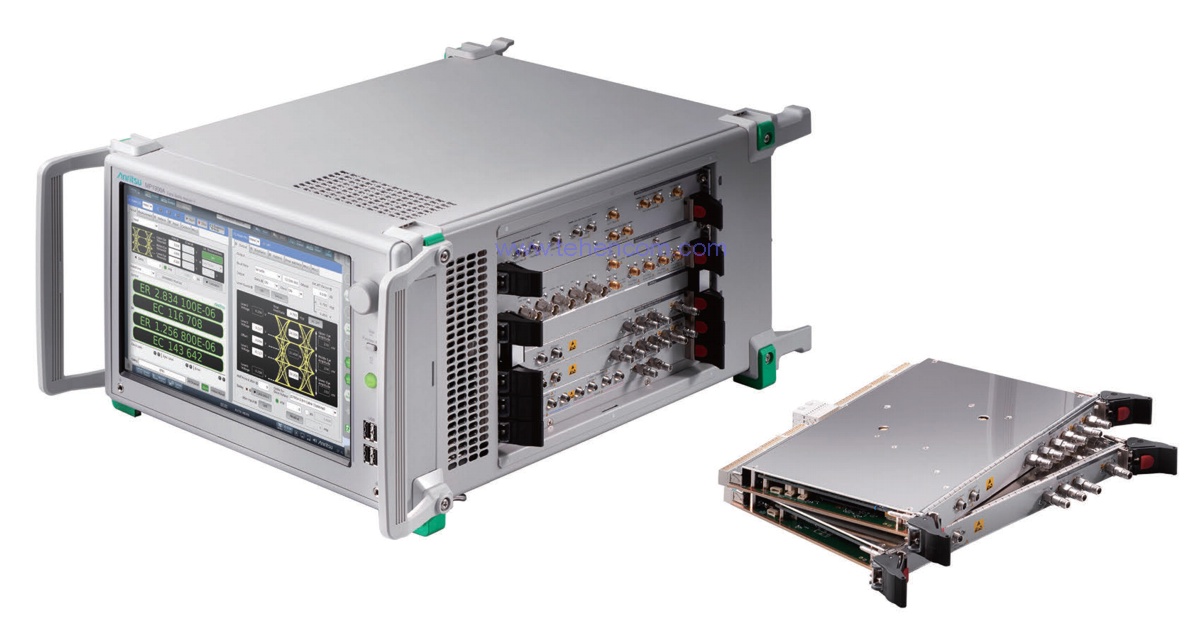Fiber optic fusion splicers
-
NoveltyTop sales
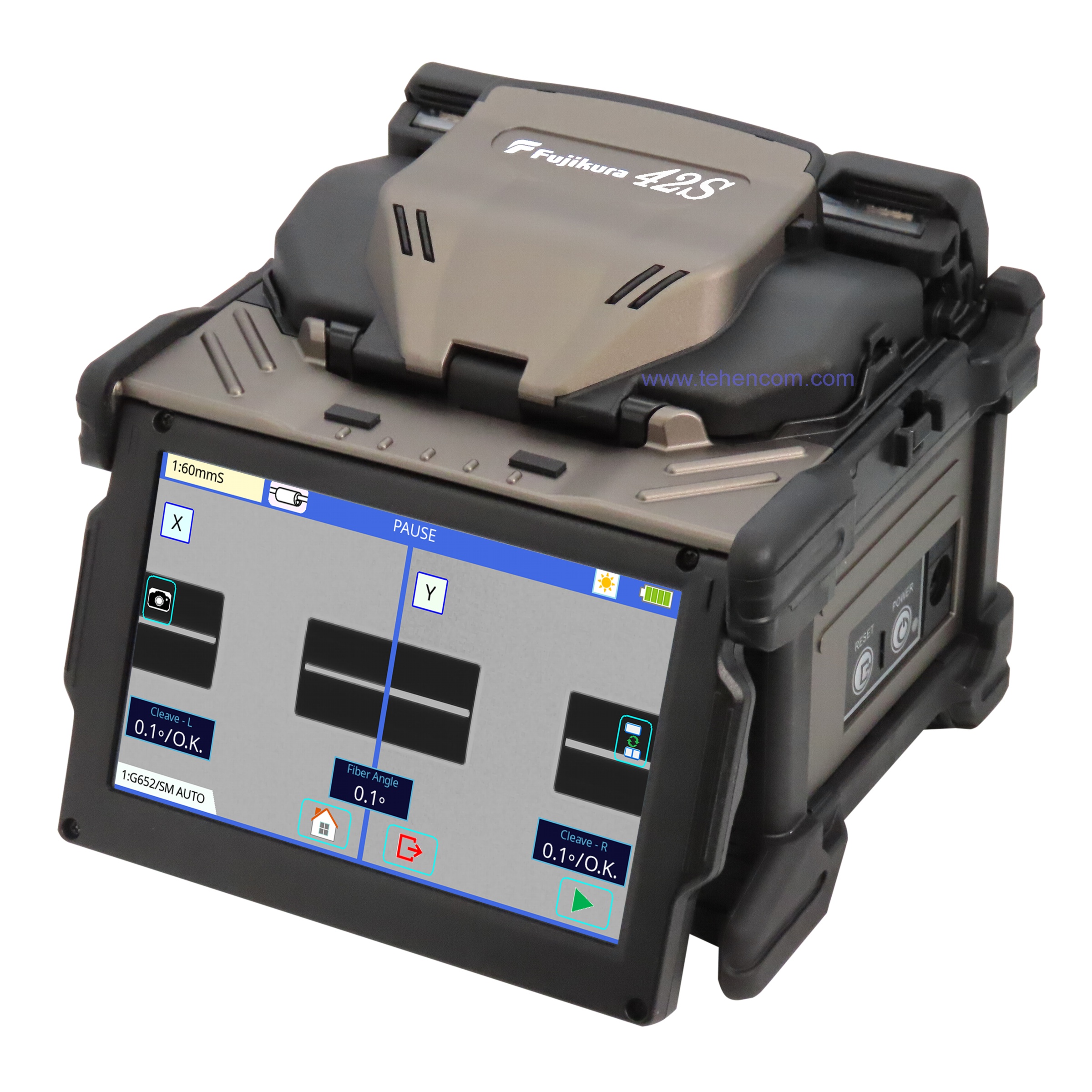 Fujikura 42S Plus
Fujikura 42S PlusFiber optic fusion splicer, 0.03 dB, 230 splices
170 002 UAH
– 5%
161 502 UAH
In stock
Product code: 2020004
Cleaver included: Fujikura CT50
Battery life: 230 splices
Electrode life: 6 000 splices
-
Top salesExpert's choice
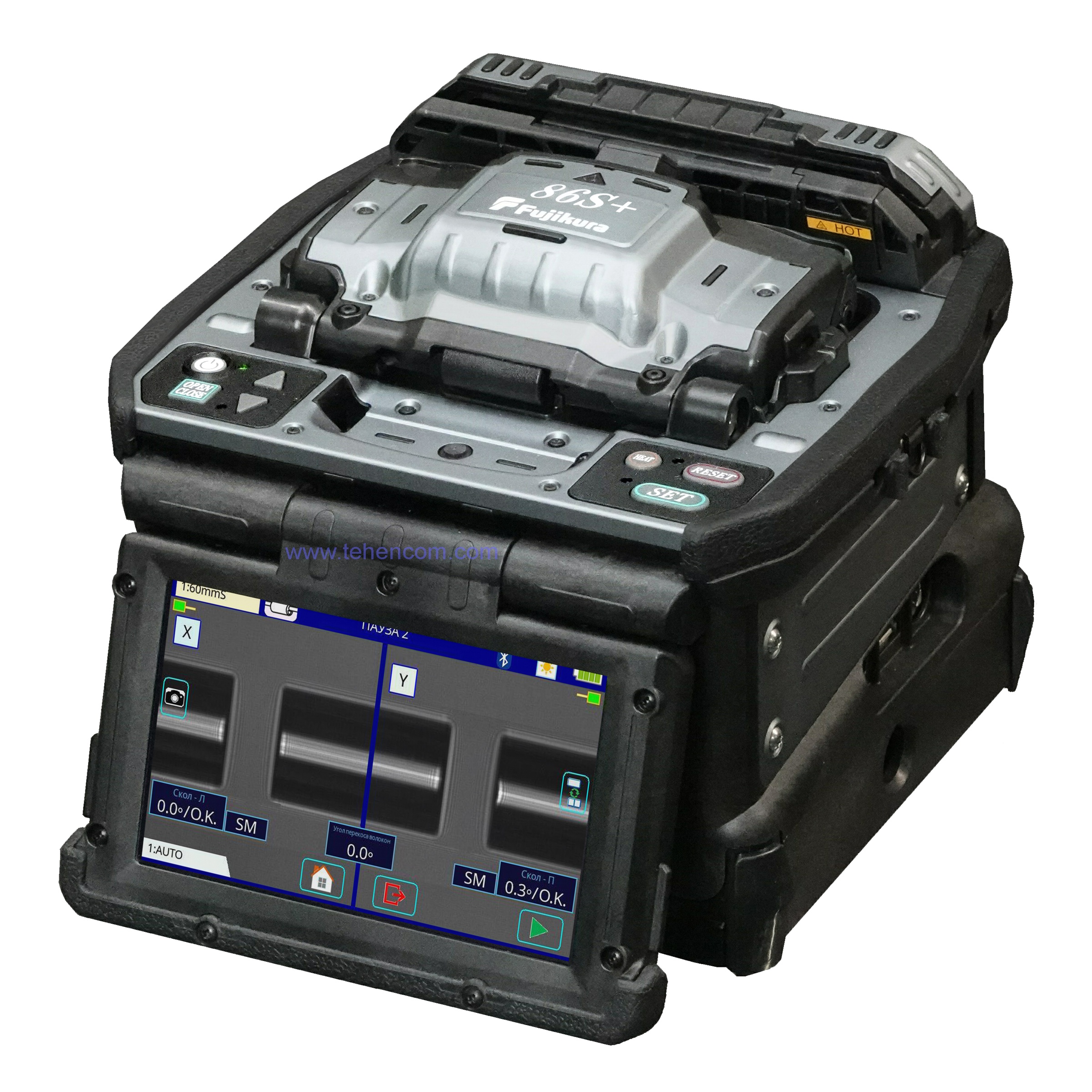 Fujikura 86S+ Plus
Fujikura 86S+ PlusFiber optic fusion splicer, 0.02 dB, 300 splices
320 880 UAH
In stock
Product code: 2020001
Cleaver included: Fujikura CT50
Battery life: 300 splices
Electrode life: 5 000 splices
-
Novelty
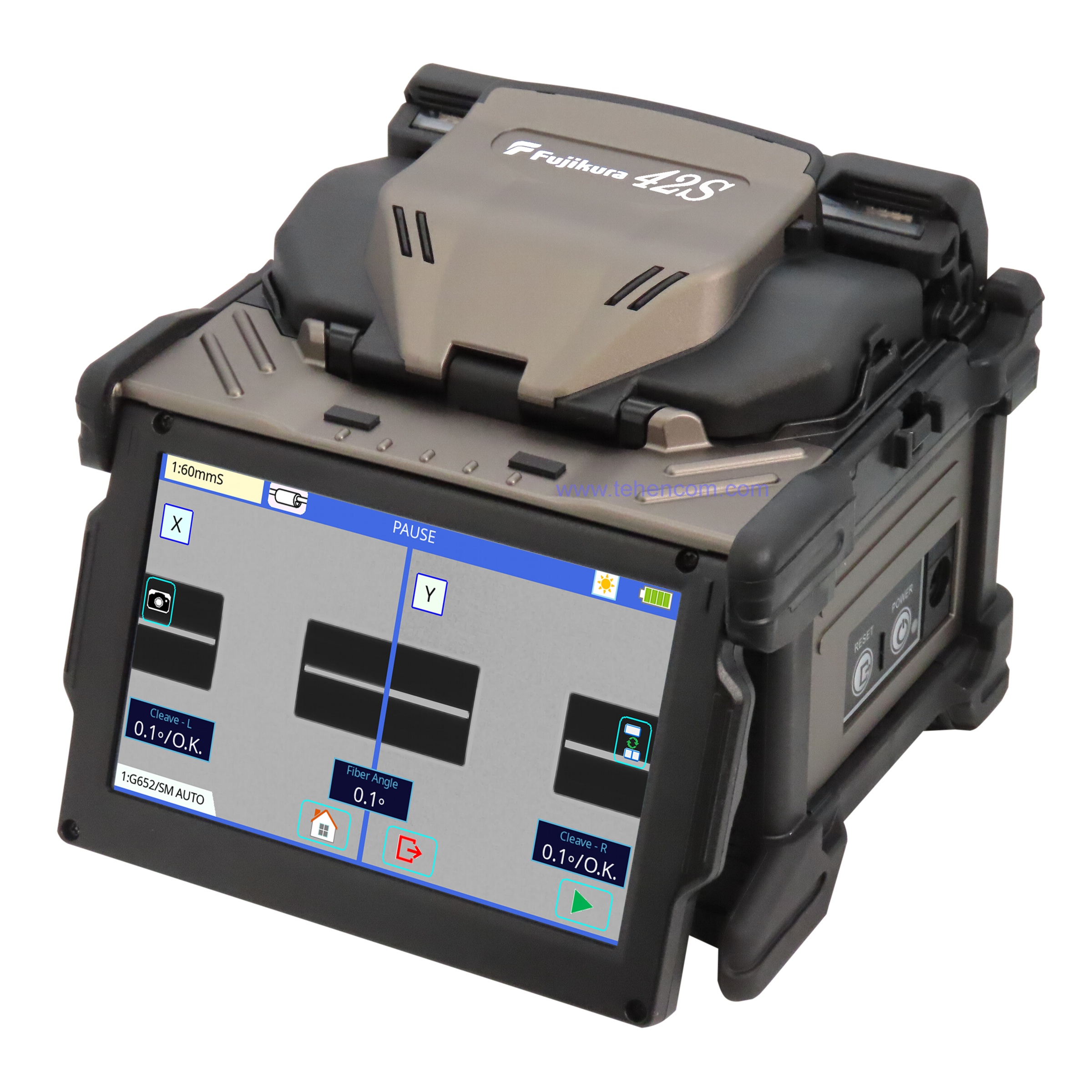 Fujikura 42S Standard
Fujikura 42S StandardFiber optic fusion splicer, 0.03 dB, 230 splices
153 000 UAH
In stock
Product code: 2020005
Cleaver included: Fujikura CT16
Battery life: 230 splices
Electrode life: 6 000 splices
-
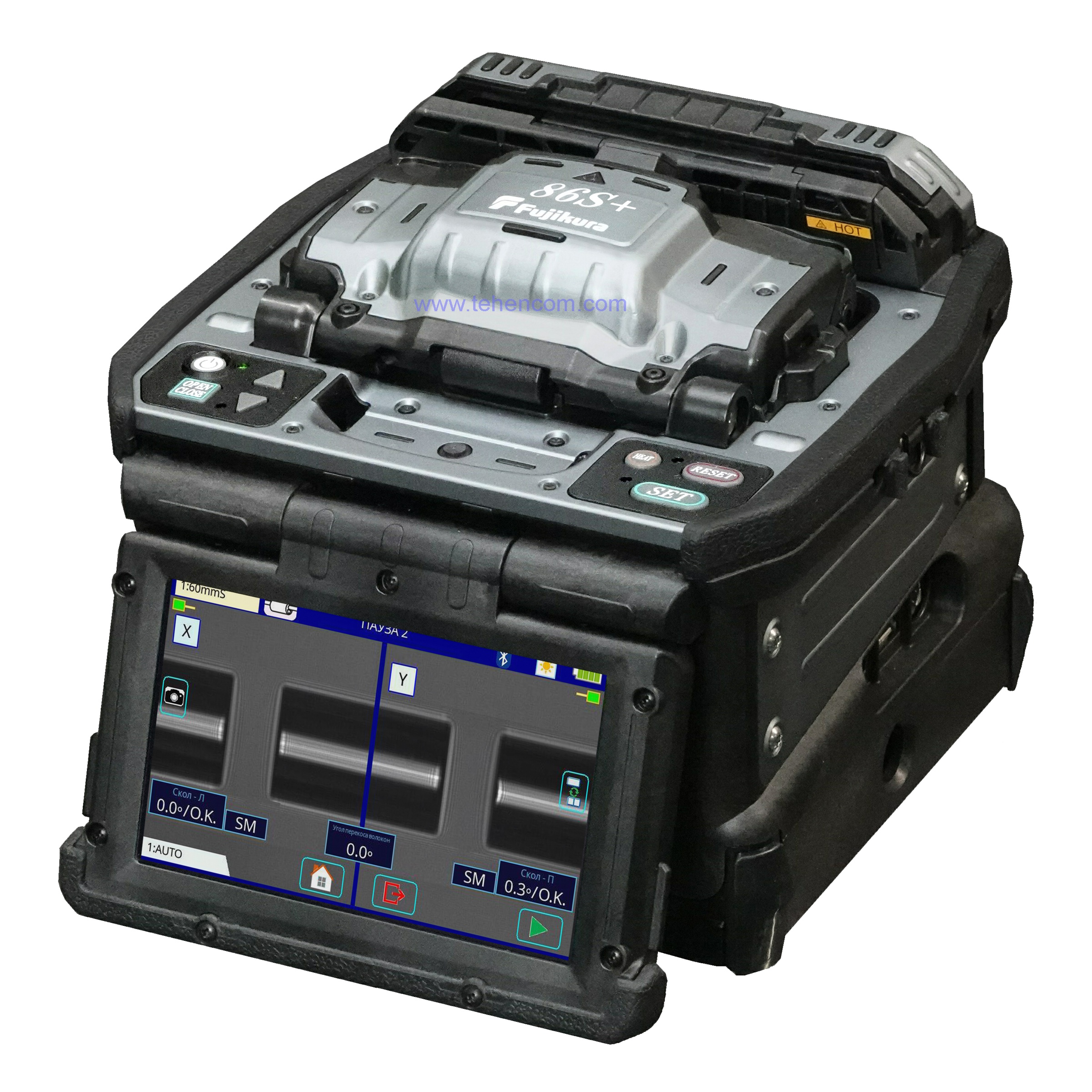 Fujikura 86S+ Standard
Fujikura 86S+ StandardFiber optic fusion splicer, 0.02 dB, 300 splices
297 504 UAH
In stock
Product code: 2020002
Cleaver included: Fujikura CT16
Battery life: 300 splices
Electrode life: 5 000 splices
-
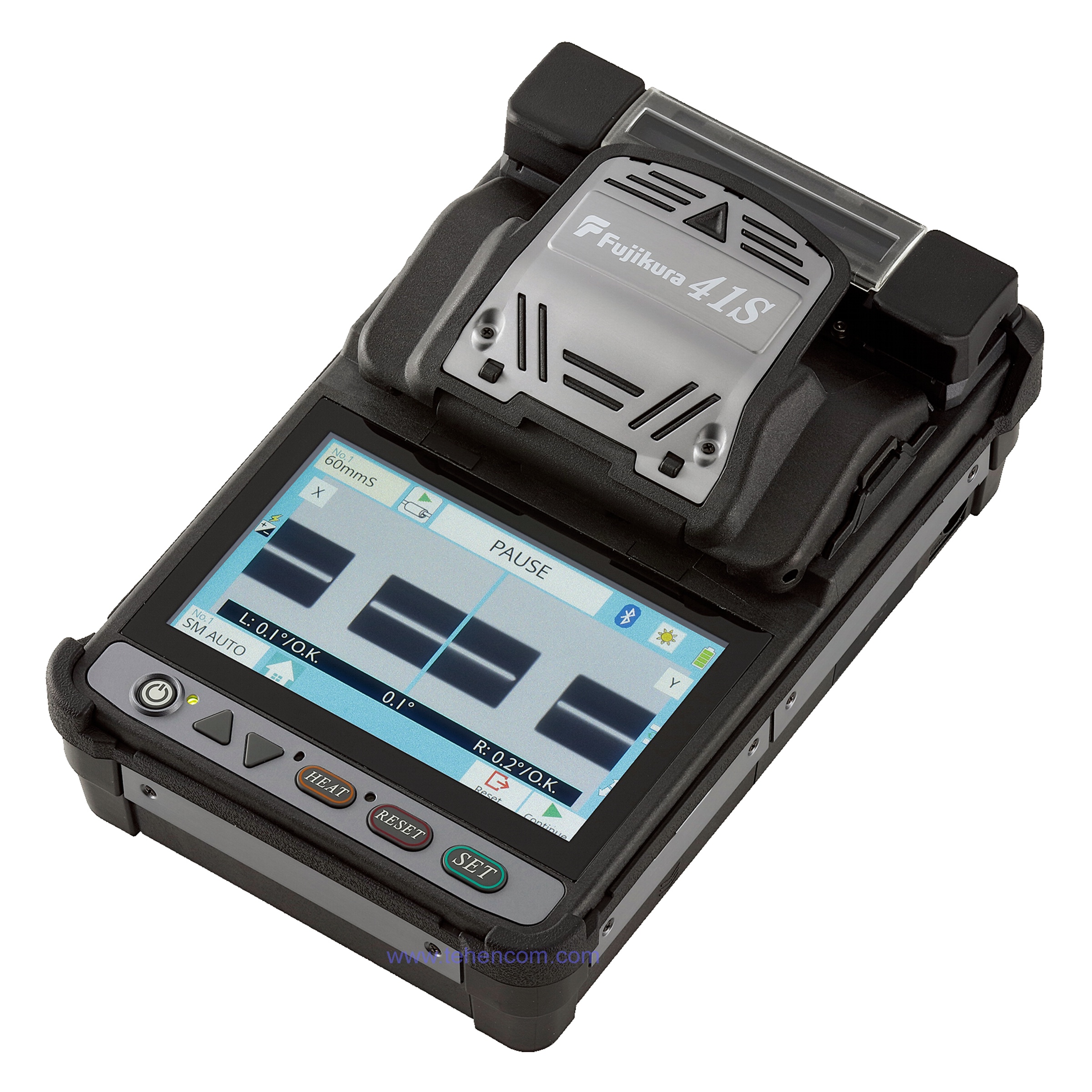 Fujikura 41S
Fujikura 41SFiber optic fusion splicer, 0.03 dB, 200 splices
Price on request
Not available
Product code: 2020012
DiscontinuedRecommended replacement: Fujikura 42S Plus
Cleaver included: Without a cleaver
Battery life: 200 splices
Electrode life: 5 000 splices
-
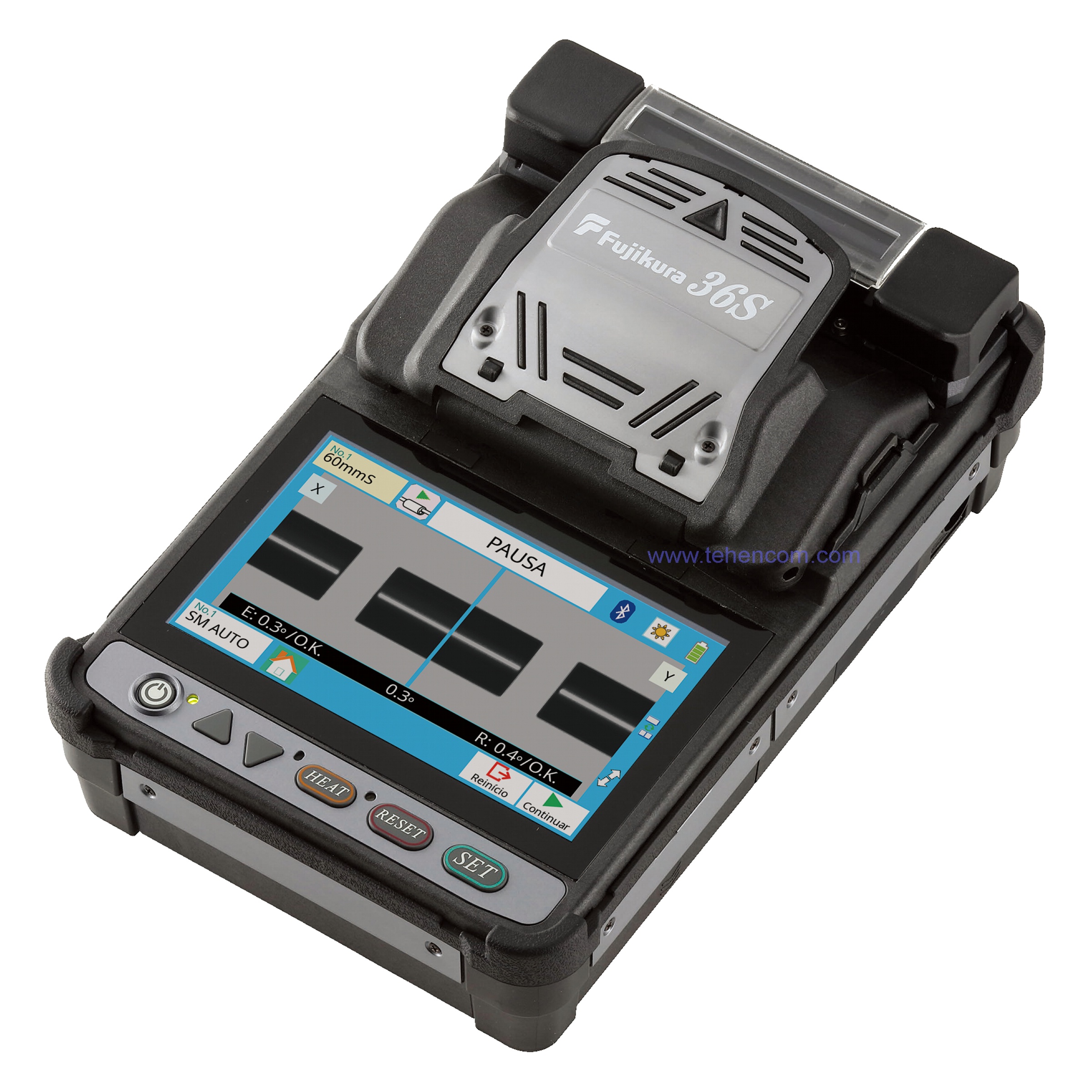 Fujikura 36S Standard
Fujikura 36S StandardFiber optic fusion splicer, 0.03 dB, 200 splices
Price on request
Not available
Product code: 2020011
DiscontinuedRecommended replacement: Fujikura 42S Plus
Cleaver included: Fujikura CT08
Battery life: 200 splices
Electrode life: 5 000 splices
-
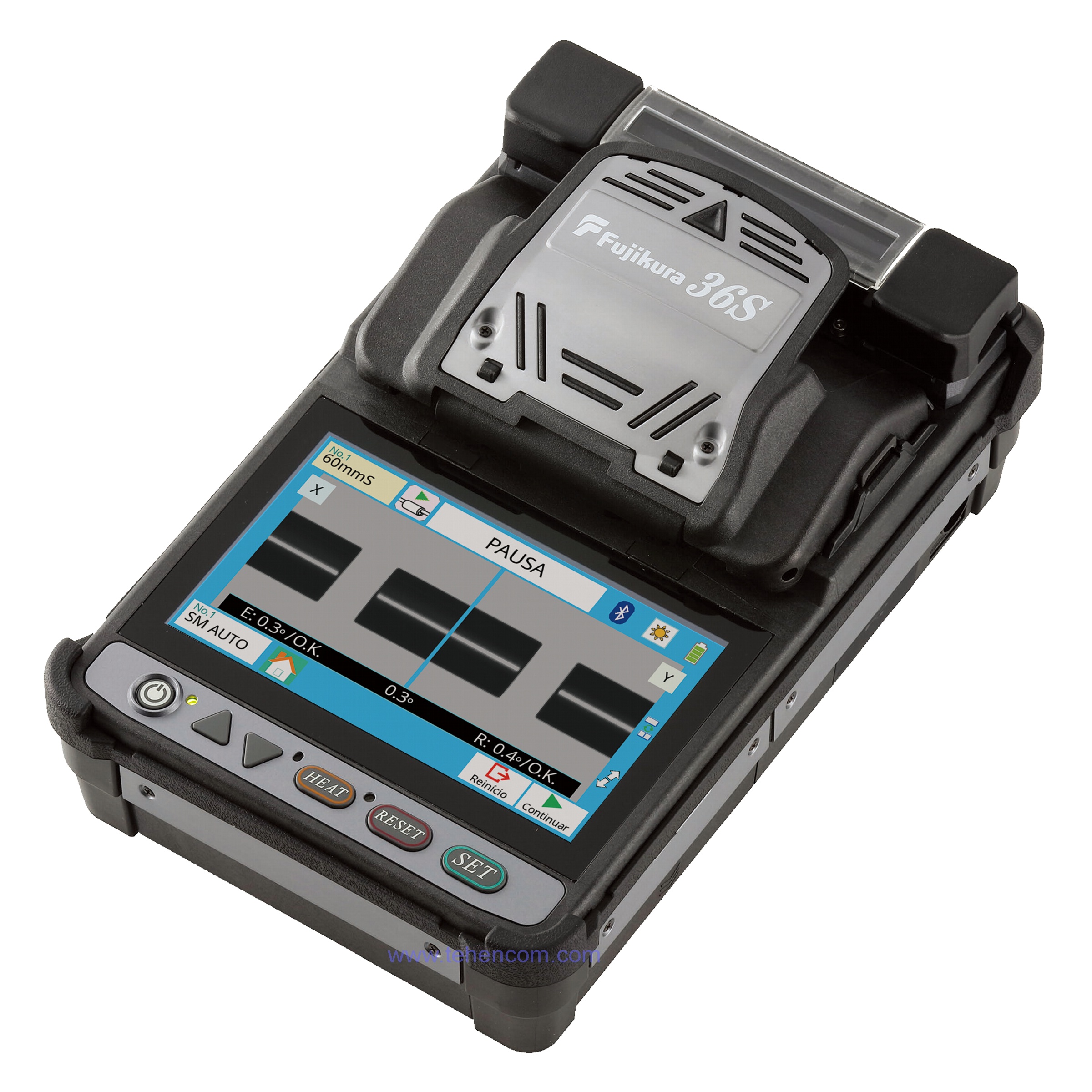 Fujikura 36S Plus
Fujikura 36S PlusFiber optic fusion splicer, 0.03 dB, 200 splices
Price on request
Not available
Product code: 2020010
DiscontinuedRecommended replacement: Fujikura 42S Plus
Cleaver included: Fujikura CT50
Battery life: 200 splices
Electrode life: 5 000 splices
-
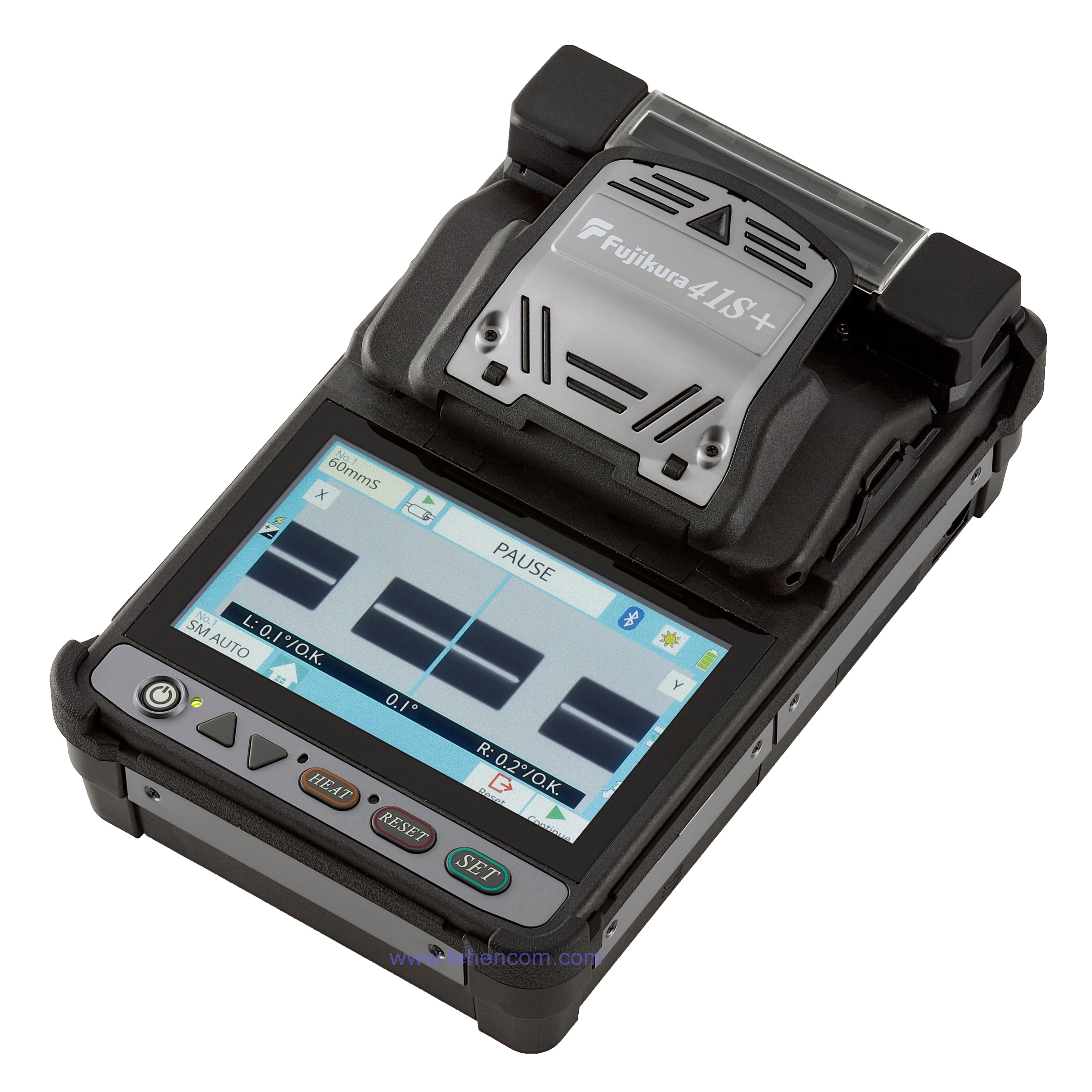 Fujikura 41S+
Fujikura 41S+Fiber optic fusion splicer, 0.03 dB, 200 splices
Price on request
Not available
Product code: 2020009
DiscontinuedRecommended replacement: Fujikura 42S Plus
Cleaver included: Without a cleaver
Battery life: 200 splices
Electrode life: 5 000 splices
-
 Fujikura 36S+ Standard
Fujikura 36S+ StandardFiber optic fusion splicer, 0.03 dB, 200 splices
Price on request
Not available
Product code: 2020008
DiscontinuedRecommended replacement: Fujikura 42S Plus
Cleaver included: Fujikura CT08
Battery life: 200 splices
Electrode life: 5 000 splices
-
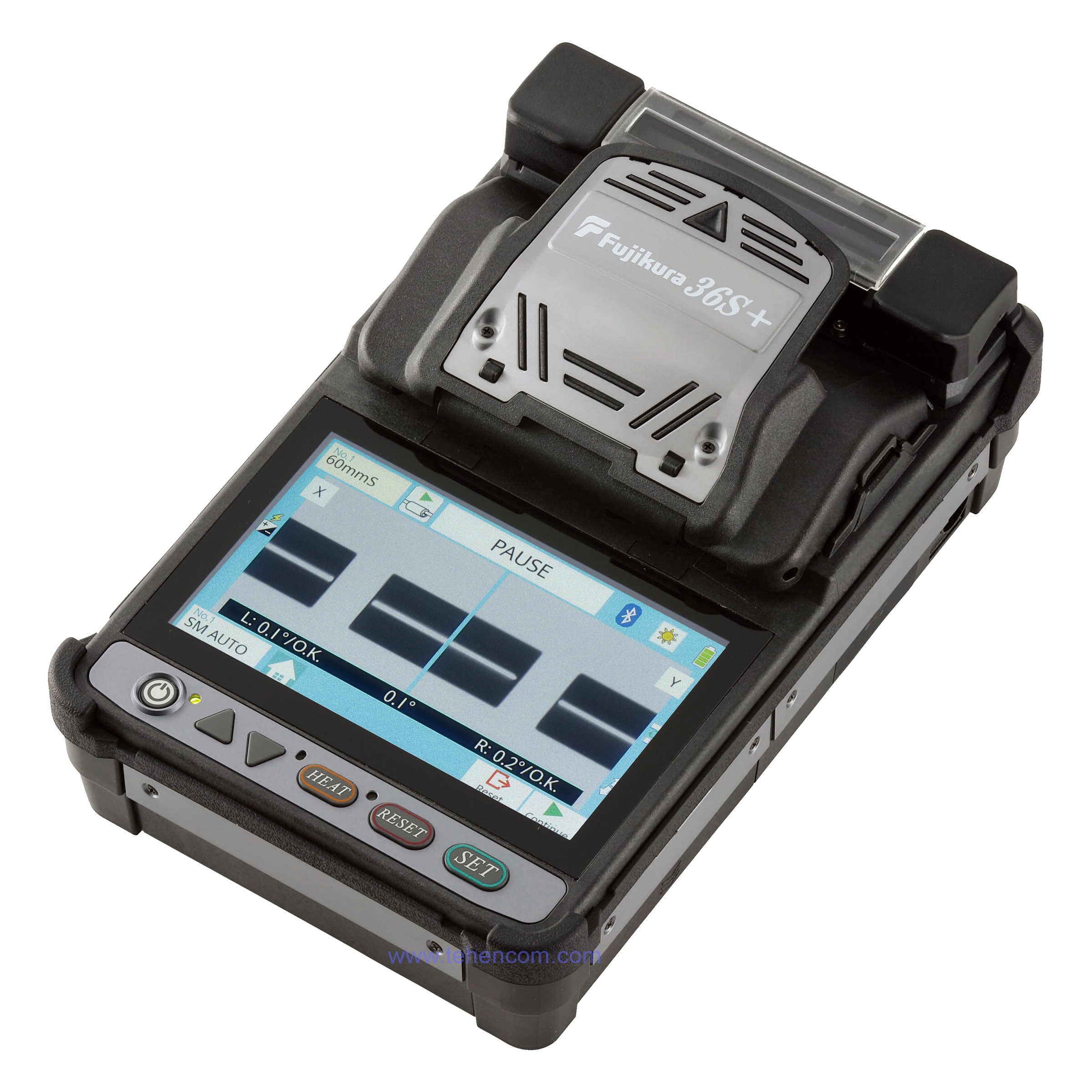 Fujikura 36S+ Plus
Fujikura 36S+ PlusFiber optic fusion splicer, 0.03 dB, 200 splices
Price on request
Not available
Product code: 2020007
DiscontinuedRecommended replacement: Fujikura 42S Plus
Cleaver included: Fujikura CT50
Battery life: 200 splices
Electrode life: 5 000 splices
-
 Fujikura 45S
Fujikura 45SFiber optic fusion splicer, 0.03 dB, 230 splices
Price on request
Not available
Product code: 2020006
Recommended replacement: Fujikura 42S Plus
Cleaver included: Without a cleaver
Battery life: 230 splices
Electrode life: 6 000 splices
-
 Fujikura 90S+
Fujikura 90S+Fiber optic fusion splicer, 0.02 dB, 300 splices
Price on request
Not available
Product code: 2020003
Recommended replacement: Fujikura 86S+ Plus
Cleaver included: Without a cleaver
Battery life: 300 splices
Electrode life: 5 000 splices
General information
To perform high-quality splicing of optical fibers, it is necessary to use a professional fusion splicer for fiber optics and a precise optical fiber cleaver. Among the equipment for splicing fiber optics (or as it is also called: splicers for optics), the products of the Japanese company Fujikura are especially popular. The devices for splicing fiber optics, which are produced by this company, are distinguished by excellent reliability, ease of use and a relatively low price. Fujikura fusion splicers have held the first position among similar devices for many years and allow splicing of any types of modern fibers on all types of networks: trunk, city, district, FTTx, PON, SCS and others.
We provide comprehensive information and technical support for Fujikura products, including practical recommendations for splicing and installation of fiber optics. Warranty and post-warranty service of fusion splicers and cleavers is provided at the service center in Kyiv. When purchasing a fusion splicer, training (theory + practice) can be provided with a personal certificate. In addition, advisory support is provided via mobile phone.
Best models
This table contains the best models of fusion splicers for fiber optics with the status of Top sales or Expert's choice. Such models have a high price / capability ratio, so they should be paid attention first of all.
| Model |
Splice loss SM
|
Splice time
|
Heat shrink time
|
Battery life
|
Electrode life
|
Cleaver included
|
Weight
|
|---|---|---|---|---|---|---|---|
|
Top sales
Expert's choice
|
0.02 dB | 7 sec | 9 sec | 300 splices | 5 000 splices | Fujikura CT50 | 2.8 kg |
|
Novelty
Top sales
|
0.03 dB | 6 sec | 16 sec | 230 splices | 6 000 splices | Fujikura CT50 | 1.4 kg |
All models of fusion splicers for fiber optics
This table shows all models of fusion splicers for fiber optics. You can sort by any of the characteristics by simply clicking on its name in the table. To see all the characteristics of certain models, add them to the comparison.
| Model |
Splice loss SM
|
Splice time
|
Heat shrink time
|
Battery life
|
Electrode life
|
Cleaver included
|
Weight
|
|---|---|---|---|---|---|---|---|
|
Top sales
Expert's choice
|
0.02 dB | 7 sec | 9 sec | 300 splices | 5 000 splices | Fujikura CT50 | 2.8 kg |
| 0.02 dB | 7 sec | 9 sec | 300 splices | 5 000 splices | Fujikura CT16 | 2.8 kg | |
|
Recommended replacement:
Fujikura 86S+ Plus
|
0.02 dB | 7 sec | 9 sec | 300 splices | 5 000 splices | Without a cleaver | 2.8 kg |
|
Novelty
Top sales
|
0.03 dB | 6 sec | 16 sec | 230 splices | 6 000 splices | Fujikura CT50 | 1.4 kg |
|
Novelty
|
0.03 dB | 6 sec | 16 sec | 230 splices | 6 000 splices | Fujikura CT16 | 1.4 kg |
|
Recommended replacement:
Fujikura 42S Plus
|
0.03 dB | 6 sec | 16 sec | 230 splices | 6 000 splices | Without a cleaver | 1.4 kg |
|
Discontinued
Recommended replacement:
Fujikura 42S Plus
|
0.03 dB | 6 sec | 25 sec | 200 splices | 5 000 splices | Fujikura CT50 | 1.3 kg |
|
Discontinued
Recommended replacement:
Fujikura 42S Plus
|
0.03 dB | 6 sec | 25 sec | 200 splices | 5 000 splices | Fujikura CT08 | 1.3 kg |
|
Discontinued
Recommended replacement:
Fujikura 42S Plus
|
0.03 dB | 6 sec | 25 sec | 200 splices | 5 000 splices | Without a cleaver | 1.3 kg |
|
Discontinued
Recommended replacement:
Fujikura 42S Plus
|
0.03 dB | 6 sec | 25 sec | 200 splices | 5 000 splices | Fujikura CT50 | 1.3 kg |
|
Discontinued
Recommended replacement:
Fujikura 42S Plus
|
0.03 dB | 6 sec | 25 sec | 200 splices | 5 000 splices | Fujikura CT08 | 1.3 kg |
|
Discontinued
Recommended replacement:
Fujikura 42S Plus
|
0.03 dB | 6 sec | 25 sec | 200 splices | 5 000 splices | Without a cleaver | 1.3 kg |
Additional equipment
In addition to the main list of fiber optic fusion splicers presented above, the following additional models and series are produced: the specialized Fujikura FSM-100 series, the universal Fujikura 62S series, the compact Fujikura 36S series and the Fujikura 19S clad alignment series. The following cleavers are also offered: the automatic Fujikura CT50, the classic Fujikura CT08 and the cheap manual Fujikura CT-02.
Manufacturers of fiber optic splicers regularly develop and launch new models of splicers with expanded capabilities and improved performance. Some time after the start of sales of new models, old models and series are discontinued. A complete list of discontinued splicers, including proposed replacements, can be found here: discontinued fusion splicers for fiber optics.
Video reviews
Better to see once than hear a hundred times. This video collection from our YouTube channel is dedicated exclusively to optical fiber splicing: new products, interesting models, features of their application, standards and work methods. We are constantly updating and supplementing this collection with new interesting materials on fiber optic splicing and related topics. Subscribe to our channel to stay updated: YouTube channel of Tehencom.
Basic theory
Buying an inexpensive and high-quality fiber optic fusion splicer is not always easy. When choosing a model, in addition to the standard parameters: fiber alignment method and splicing losses, it is necessary to take into account additional characteristics and capabilities of the splicer: splicing and heat shrinkage speed, electrode life, number of splicing/heat shrinkage cycles from a standard battery, computer connection interface, a set of additional functions, operating temperature range, quality and durability of the device, the reputation of the manufacturer, the professionalism and reliability of the supplier, the availability of a service center, warranty period and much more. In addition, you may need technical advice on the types of fusion splicers produced: with precise alignment by the fiber core, with active alignment using V-shaped grooves and with alignment by the clad.
These articles contain useful information on fiber optic splicing. For complex and unclear issues, write to us by e-mail or call, we will be happy to advise.
Types of splicers by the method of alignment of optical fibers
The influence of electrode wear on splicing quality
What is the difference between Fujikura cleavers? Questions and answers
